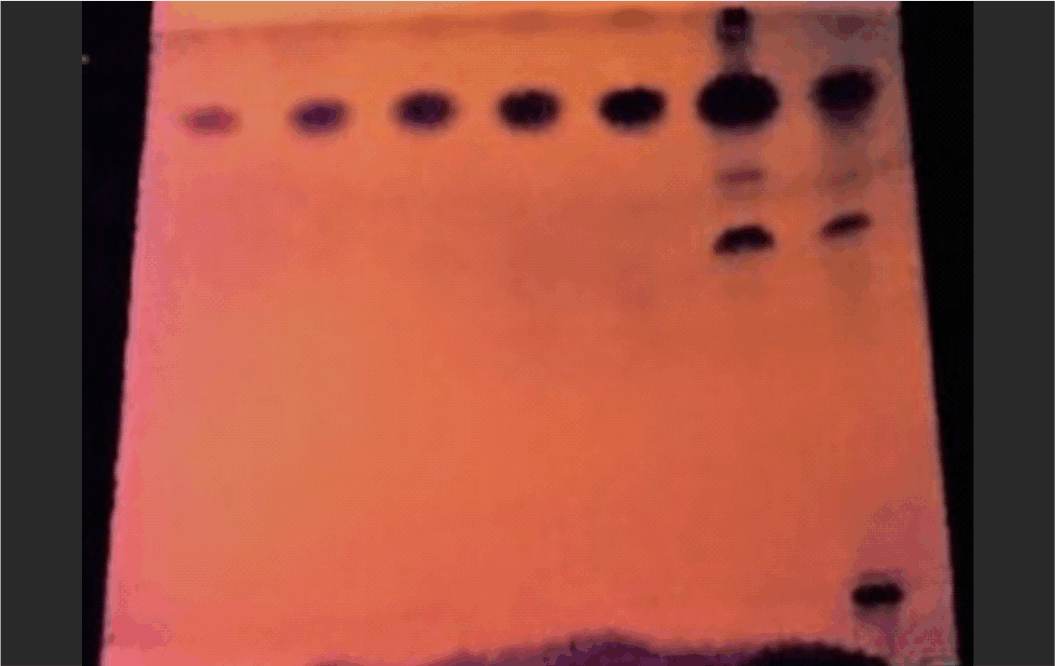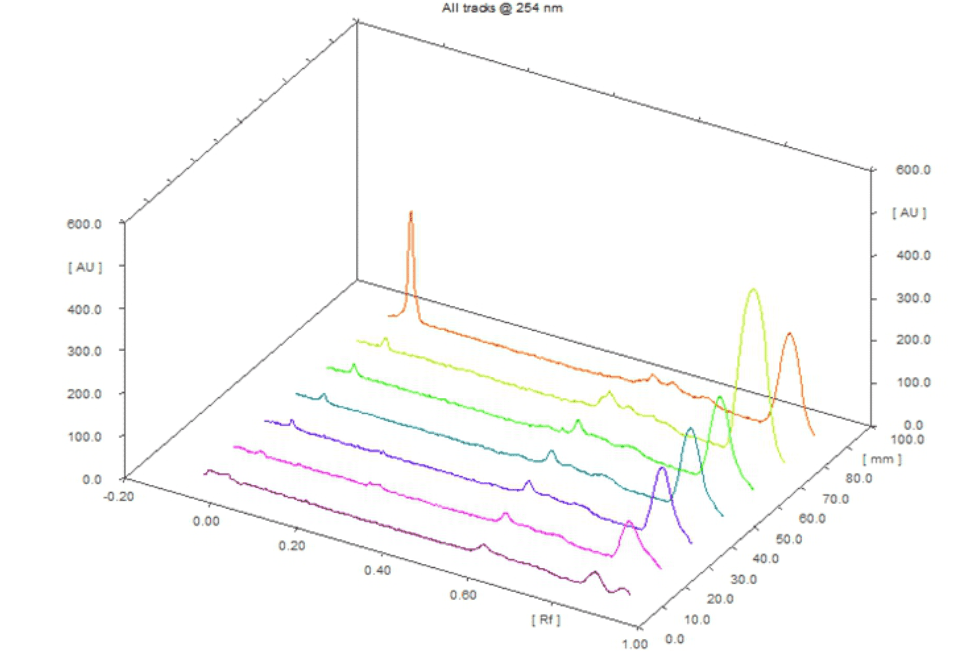Preparative Isolation, Characterization and Estimation of Iso-Alantolactone from Inula racemosa Roots
Aim: Our study mainly aimed at the chromatographic separation and spectroscopic characterization of iso-alantolactone
from I. racemosa and its estimation.
Method: The first step involved the preparation of methanolic extract of Inula racemosa (roots), fractionation with
hexane and dichloromethane, and the isolation of compounds using MPLC (Flash) system. It was followed by
characterization of sesquiterpenes isolated by spectroscopic methods. Finally one of the isolated compounds was
used for profiling of extracts and fractions of I. racemosa using HPTLC.
Result: MPLC of the extract resulted in the isolation of four compounds. On the basis of spectroscopic data analyses,
the compounds were found to be iso-alantolactone and three new dimeric lactones. The mobile phase composition
was optimized to develop a suitable and accurate HPTLC densitometric method for the analysis of iso-alantolactone in
extracts. Ascending development to a distance of 8 cm with toluene-chloroform-ethanol (8:8:2 v/v) gave sharp,
symmetrical and well resolved bands at the R value of 0.81 ± 0.01. The optimum saturation f time was found to be 10
min. The detection was carried at 254 nm. Based on HPTLC analysis, the content of isoalantolactone in the hexane
fraction was found to be double than that in the methanol extract.
Conclusion: Iso-alantolactone was isolated and used for profiling of I. racemosa extract.
 |
| TLC plate showing spots of iso-alantolactone (tracks 1-5),
hexane fraction (track 6) and methanolic extract (track 7) of Inula racemosa as seen after spraying with anisaldehydesulphuric acid reagent (Tracks are numbered from left to right) |
 |
| HPTLC 3D graph showing different concentrations of isoalantolactone and comparison with hexane fraction and methanol extract of Inula racemosa as seen at 254 nm |
How to Cite this paper?
APA-7 Style
Tyagi,
R., R. Mir,
S. (2022). Preparative Isolation, Characterization and Estimation of Iso-Alantolactone from Inula racemosa Roots. Research Journal of Phytochemistry, 16(1), 36. https://rjp.scione.com/cms/abstract.php?id=42
ACS Style
Tyagi,
R.; R. Mir,
S. Preparative Isolation, Characterization and Estimation of Iso-Alantolactone from Inula racemosa Roots. Res. J. Phytochem 2022, 16, 36. https://rjp.scione.com/cms/abstract.php?id=42
AMA Style
Tyagi
R, R. Mir
S. Preparative Isolation, Characterization and Estimation of Iso-Alantolactone from Inula racemosa Roots. Research Journal of Phytochemistry. 2022; 16(1): 36. https://rjp.scione.com/cms/abstract.php?id=42
Chicago/Turabian Style
Tyagi, Rama, and Showkat R. Mir.
2022. "Preparative Isolation, Characterization and Estimation of Iso-Alantolactone from Inula racemosa Roots" Research Journal of Phytochemistry 16, no. 1: 36. https://rjp.scione.com/cms/abstract.php?id=42

This work is licensed under a Creative Commons Attribution 4.0 International License.



